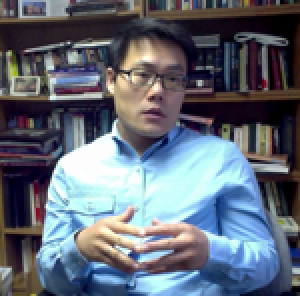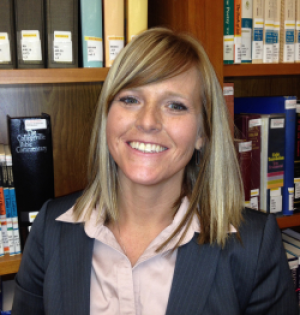Resources

My last first day of class – as a student – was fifteen years ago. But here I am again, somehow back for more.I could make this into one of those “how did I get here?” blogs, and that might be interesting. (The short version is that you should sign up for Wabash’s Breaking the Academic Mold writing workshop if you get the chance). But the how of it all is less interesting than the why. The why of this new first day of class, fifteen years after I thought I was finished, is that I discovered something I really wanted to learn, and I knew I couldn’t teach myself. Since you’ve found your way to a Wabash Center blog post, there’s a good chance you’re pretty great at teaching new things to yourself and to others, and there’s a good chance you’re a really accomplished learner, too. We probably have that in common. I’ve taught myself lots of things over the years, from Italian to citation formats to how to caption videos on the LMS to how to write a tenure dossier. We’ve all learned things without a teacher. But after spending a week in the Minnesota woods with the fantastic teachers Wabash brought to that writing workshop, I knew I needed to learn more, and I knew I couldn’t do it alone. That’s how I ended up here, on my first day of class in an MFA program in nonfiction. It’s my sabbatical year – a precious and rarifying privilege, to be sure—and I’m spending it trying to learn how to be a writer. I’ve written lots of stuff, of course, just like you have, but I want to learn the craft of writing. And for that I need teachers. It’s a wild and unexpected thing, if I’m being honest – the experience of having a teacher. I had forgotten, after a decade with my name on the syllabus, what it’s like to be a student. All the old anxieties showed up like the faces you’d hoped to avoid at your high school reunion. Will I be smart enough? Will I come across as too eager, or too entitled, or too much of something else, or—worst of all—will I come across as not enough? Does she really mean double-spaced with 12-point font? Do I really have to print a copy? What should I wear?But I don’t want to write about the anxieties; I don’t want to give those old faces the satisfaction. I want to write about the way euphoria took me by surprise. After all these years, I had forgotten what it means to show up to learn a thing and be greeted by someone ready to teach you. I had not remembered what it’s like to encounter an expert in a classroom, someone hand-picked and specially trained to help you learn. Even as someone in the education business, I had somehow lost track of the feeling of wanting to learn something and having someone appear, ready to teach it to me.I’m remembering now that having teachers is magical. It’s magical to learn from someone who has spent a lifetime preparing to teach you. It’s magical to place yourself in the care of someone who’s ready to help. It’s magical to have a guide, to meet a mentor, to learn in community. The experience of having a teacher again, after all these years, is reminding me that that’s who I am to my students. I suppose that after so many intro classes and so many seminars, I had slipped into thinking about my role in many other ways than magical. I’ve thought of myself as an institutional intermediary, as an enforcer of policies and offerer of services, as a facilitator or orchestra conductor, and even sometimes as a “sage on stage,” dispensing arcana on demand. But now, back on the other side of things and remembering what it’s like to trust someone with my own formation again, I’m noticing the ways my students have told me what I’ve meant to them. I’m noticing how they describe me—and my colleagues—as transformative and foundational figures in their lives. I have tended to aw-shucks these comments away, reminding students of their roles in their own formation. But now, having teachers again, I think I understand better what my students mean. It’s still just the first day of class. All the frustrating parts of having a teacher are still ahead, and I’m sure there will be plenty of opportunities for realizing and remembering the ways in which I can be a frustrating teacher, too. There will be time for all of that, and more that I can’t anticipate. But for now, I’m reveling—I’m exulting and I’m nearly vibrating with excitement—at the magic of having teachers.

In a poem entitled The World’s Feeling,[1] the Brazilian poet Carlos Drummond de Andrade has a line that says: “I have only two hands and all the feelings of the world.” I love this metaphor and I feel that this is how I have been living lately. The political arena seems to be depleting us day by day with news of atrocities, shocking moves that place the world at a tipsy point, and new national laws that put people in danger and potential situations of disaster. And we have just started! Too many feelings, too much disastrous news, and too few defused responses and ideas without anything that seems to be truly articulating the moment in any clarifying direction. Every movement is divided. The so-called leftists, living in a time of potentialities to create a new left, is bitterly divided over issues either defending one candidate or accusing another. However, there have been positive moments. The Women’s March was a balm to many of us. As were the responses from Boston and NYC about Trump’s threat to immigrants and registering Muslims. As a citizen and as a teacher, I feel the weight of the feelings of the world and yet I only have two hands to deal with it all. The task of living our days in resistance to power seems insurmountable and that also seems to be the hope of the leaders of this country. The battle at hand is not only on the front of new laws and administrative resolutions but also on the controlling of feelings and emotions. The attack on media as the new enemy, the creation of “alternative facts,” and actions such as “President Donald Trump to publish a weekly list of crimes committed by immigrants,”[2] are all tactics used by the government to disturb our feelings and confuse our ideas. This is not removed from the classroom. Students carry their emotions into every class. Teaching engages the world of ideas and contemporary movements. Teachers must engage ideas and human feelings at the same time. Ideas are dependent on feelings and feelings are affected by ideas and it is in this chiaroscuro time and place where teachers work. Antonio Gramsci defines our time in precise ways: “The old world is dying, and the new world struggles to be born; now is the time of monsters.” An empire is eroding, a collapsing new world order is emerging and in the midst of it all, there are monsters of all kinds! We can surely name them! It is in this chiaroscuro time that faculty are called, even demanded, to attend to teaching in ways that take seriously the complicated interplay between ideas and feelings in their subject matters and within the student’s lives. Our classrooms are containers of the world’s feelings with only few hands. However, if education is for life and not for a program of profit and if outcomes are hoped for the decolonization of the minds and bodies and not to fulfill a neoliberal project of processual measurement, then we can meet each other now; but also, beyond the surroundings of the classroom: in soup kitchens, in marches for rights of people, in strikes against economic austerity deals of destitution. We can continue to organize something that will be plural, filled with ambiguities and paradoxes, but that can somewhat, produce sustainable forms of resistance to be engaged. In order to do that, teachers must teach with their heart and mind filled with feelings of strength and possibilities. Classrooms must be places for thinking and feeling, where emotions embolden ideas and where ideas help organize emotions. Our classes should fuse Descartes with Antonio Damasio: we think and we feel, therefore we are! We need idea-feelings, that is, thinking that feels and feelings that think. In this way, classrooms will be spaces with deep liberating thinking and expansive feelings. The song Volver a Los 17[3] (Returning to seventeen) calls us to engage our feelings: What feelings can grasp knowledge cannot understand, not even the clearest move not even the widest thought, the moment changes everything We need poetry and songs to continue moving! Art, poetry, and songs to expand us, to help us be better teachers. The same song says something akin to our endless task of teaching: Entangling, entangling it moves, like the ivy on the wall, and so it flowers, and it grows, like tiny moss on the stone. Oh yes oh yes We are ivy on the wall of empire! Entangling in everything there is. We are flowers inside of guns, we are tiny mosses on the stones of our reality. Oh yes oh yes! When our minds cannot grasp the intensity of this moment, we can recur to our hearts. For there, in our hearts, if well cared, we can find solace, peace, and sustenance. For the hearts of teachers are bigger than anything. The hearts of teachers embrace all kinds of students and realities, wrestle with all kinds of theories, and engage all forms of thinking-feeling. So we don’t fear the world! If the world looks frightening, our heart knows better. As the same poet Drummond says… World, world, wide world, wider is my heart.[4] [1] Carlos Drummond de Andrade, Sentimento do Mundo. [2] http://www.independent.co.uk/news/world/americas/donald-trump-publish-weekly-list-crimes-immigrants-commit-refugees-aliens-executive-order-us-a7546826.html?cmpid=facebook-post [3] Song by Violeta Parra. Hear the song here by Mercedes Sosa and Milton Nascimento: https://www.youtube.com/watch?v=MB37oAxOkzA [4] Carlos Drummond de Andrade, Poema de Sete Faces.

Cláudio Carvalhaes Associate Professor McCormick Theological Seminary In Brazil We who believe in freedom cannot rest We who believe in freedom cannot rest until it comes. (1) We have had a month of intense events in the US. The killings of Black precious people, this time, Philando Castile and Alton...

Nancy Lynne Westfield Associate Professor of Religious Education Drew Theological School Sometimes learning is accompanied by tears, theirs and mine. The concept of mis-education is so disquieting to some students that tears are shed in the classroom. Never has there been bold sobs or muffled cries of languished sorrow

Song-Chong Lee, Ph.D. Associate Professor of Religious Studies and Philosophy University of Findlay Due to the racial and religious homogeneity of my institution, which is predominantly white and Christian (the University of Findlay, in rural Ohio), I have unconsciously focused on issues of greatest concern to my students, especially in the beginning of my teaching career – and this has not included race. This is ironic, for I myself am a native born Korean transplanted to the American Midwest. It was not until I taught my Islam course in 2013 that I found this approach deficient. That semester I had...

Ella Johnson, Ph.D. Assistant Professor of Systematic Theology St. Bernard’s School of Theology and Ministry I didn’t plan to bring it up. In fact, I had made a conscious decision to not talk about it. But, in the middle of class, I said something. I had to. I still wonder if I made the right decision. August 27 was the first day of my Theology of Church and Ministry class. I was prepared with a list of learning objectives I wanted to accomplish: introductions to the class and to each other; review of the course outline; overview of the scope...